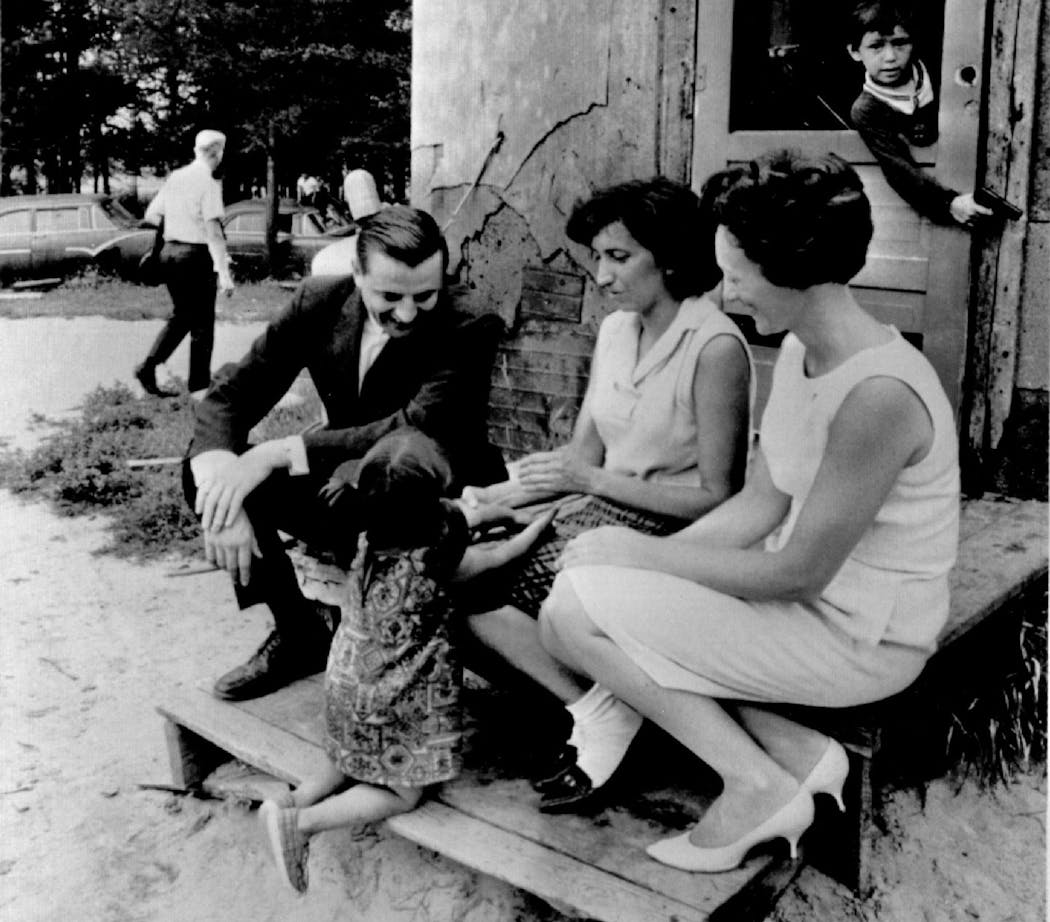We're still arguing about living with each other 55 years on from passage of the Fair Housing Act, which Minnesotan Walter Mondale sponsored as a U.S. senator.
Since 1968, two questions have shaped housing access, affordability and racial equality. On Monday, sociologist Gregory Squires of George Washington University put his finger right on them.
"Should the focus be on helping people of color access neighborhoods that they have traditionally not had access to? Or should the focus be on investing in distressed communities so that people can stay where they are?" Squires asked during a new speaking series at the University of Minnesota called the Mondale Dialogues.
These questions — laced by politics, money and insularity — remain important today in Minnesota for three reasons.
First, state legislators this spring infused Minnesota Housing, the state housing finance agency, with a staggering $1 billion atop its normal $190 million biennial budget to help more Minnesotans get into places they can afford.
It will take at least five or six years for all that money to flow through planning and construction into finished housing. Decisions next year on where to build will have a profound effect on what affordable housing, especially in the metro region, looks like in the 2030s and 2040s.
Second, economic and population growth in Minnesota for more than a decade has been driven and shaped by people of color. Building enough housing, in the right places, matters more than ever for the state's long-term economic good.
In other words, the goals of fair housing that were aspirational in Mondale's time are now an economic imperative.
Third, there's a new wrench in the whole endeavor. Recent rulings from the U.S. Supreme Court, including one on affirmative action at colleges, placed all race-conscious laws into dispute. "Much of what has been done in the name of race equity now is vulnerable, which contradicts the initial intent of the Fair Housing Act," Squires said.
Suburbs and exurbs are integrating as more people of color gain wealth. Integration shouldn't just be about race, however. Minnesotans shouldn't live in bubbles of race or affluence. The state's affordable-housing financiers and developers should be building everywhere in coming years, not just concentrating on Minneapolis and St. Paul.
For several decades after the act, Minnesota put integration first and incentivized new housing for lower-income families and individuals throughout the Twin Cities region. People were given the option to move away from the poorest neighborhoods in Minneapolis and St. Paul.
That changed in the 1990s, shaped in part by leaders in the two cities worried about urban decline. Their desires were reinforced by developers and nonprofit organizations that work on building homes.
Racism and politics also played a role. In affluent areas in both cities and suburbs, white people resisted new housing and people of different races and lower income levels.
"The state housing finance agency and the Met Council abandoned a lot of the strategies they used to use in the 1960s and 1970s," Myron Orfield, a former Democratic state legislator and longtime professor at the University of Minnesota Law School, said during Monday's seminar. "It's resulted in an explosion of racial segregation."
The counterargument lies in perceptions of what's fair for the poor, particularly people of color.
"The thing I struggle with around integration being the only goal is we're not addressing discrimination," Shannon Smith Jones, a leader at Greater Twin Cities United Way and former executive director of Hope Community in Minneapolis, said at Monday's event.
She later added, "There's no talk about breaking up concentrations of race unless we're talking about people of color. I also worry about solving for the breaking up of poverty. Are we solving for the jobs, or are we just making sure we don't have a bunch of impoverished people in the same building?"
Today, the momentum in the fair housing movement remains with the redevelopment of existing neighborhoods, chiefly in cities. The integration of predominantly white suburbs is secondary even though, as Orfield noted Monday, it's far less expensive to build in them.
"Most people who have followed this stuff will argue for both the right to move and for reinvestment," Squires said.
Mondale, who died in 2021, remained engaged in the debate his entire life. In an op-ed for the New York Times on the 50th anniversary of the Fair Housing Act in 2018, he lamented that the ideas of "anti-discrimination" and "integration" were working at cross-purposes.
"To the law's drafters, these ideas were not in conflict," Mondale wrote. "The law was informed by the history of segregation, in which individual discrimination was a manifestation of a wider societal rift."

Ramstad: Minnesota demographer takes deeper look at migration, workforce pressure
Ramstad: Health care is a tough arena for AI to make a difference
Ramstad: Misinterpreting data led me to the wrong conclusion about Minnesota retirees
Ramstad: How Rochester is keeping its housing growth on track





